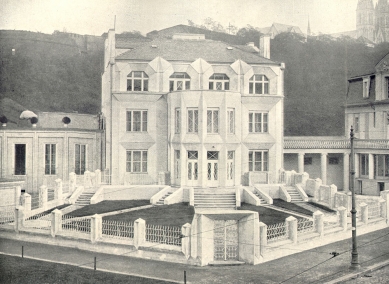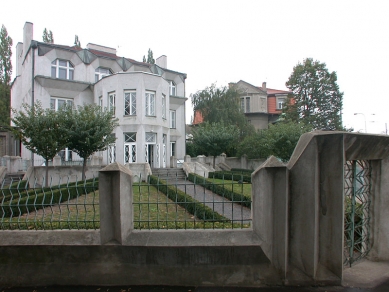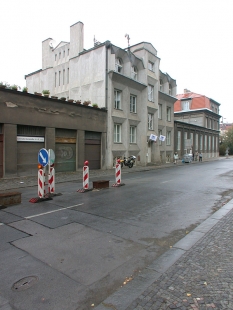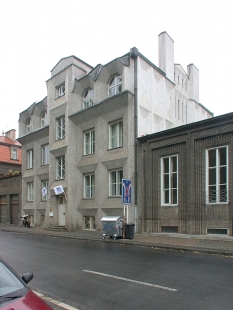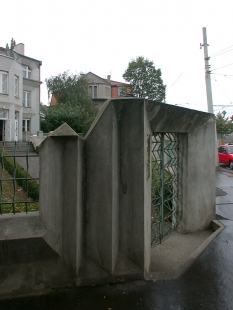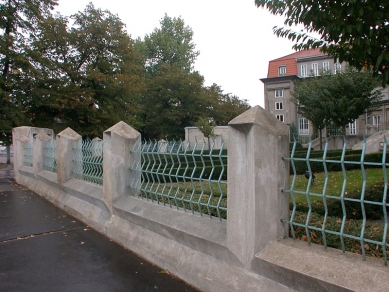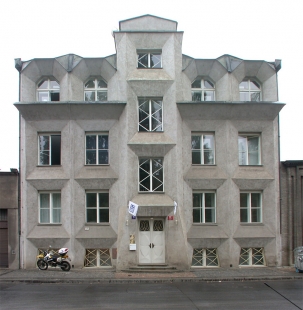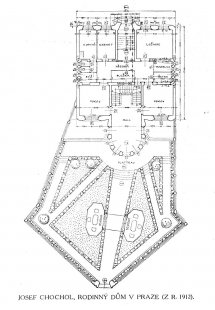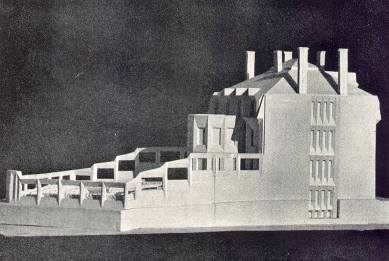
<Vila Kovařovic>

In the colorful mixture of architectural styles that Prague has to offer, there is also cubism, which brought broken surfaces into architecture, thus creating the dynamics of light and shadow. The construction of Prague's cubist buildings can be bounded by the years 1911-23. At the beginning of Prague's cubist architecture were Pavel Janák, Josef Gočár, Josef Chochol, and Vlastislav Hofman. Perhaps the most famous cubist house in Prague is the House at the Black Madonna, located in one of the most attractive spots in the city center at the corner of Celetná Street and Ovocný Trh, built according to the design of architect Josef Gočár. The cubist style is also reflected in the interior spaces and furnishings. Currently, there has even been a restoration of the original historical cubist café. The Teacher's Houses in the Old Town streets of Eliška Krásnohorské and Bílková, designed by architect Otakar Novotný, are also well-known, along with some others.
An extraordinary quality work was created by the Písek native architect Josef Chochol, even though he dedicated a very short period, defined by the years 1912-14, to cubism in his work. All his significant cubist realizations can be found under the historical Vyšehrad and date back to 1911-13: a three-house building on Rašínovo nábřeží next to the Vyšehrad tunnel, a corner apartment building No. 98 on Neklanova Street, and especially Kovařovic Villa No. 49 on Libušiná Street with a cubistically designed garden, including its fencing. Even in these buildings, the interiors contain many cubist elements. Traces of cubist architecture can also be found on some facades of former new buildings in the area of the former Podskalí.
Therefore, we can rightfully state that many peak objects of Prague cubist architecture are located in the district of Prague 2. Here they attract the interest not only of experts but also of domestic and foreign tourists, as well as being the destination for local history walks.
The three-story cubist Kovařovic Villa below Vyšehrad unjustly stands somewhat in the shadow of other Prague cubist buildings. The villa was built on the site of a former Schwarzenberg brickworks. The project was developed by architect Josef Chochol, who fully utilized the irregularly shaped building plot and excellently combined the house and garden. The builder was the contractor Bedřich Kovařovic, who served as an inspector for the construction enterprises of the Prague municipality. The construction took place in 1912-13. From the windows of the garden façade and garden, there was surely a beautiful view of the Vltava River, then still undisturbed by busy traffic.
The main facade of the villa with the identification number 3 faces Libušina Street and is inserted into the row of houses. Here is the direct, operational entrance to the building. The rear façade was composed as representative and faces the garden, which has a cubist fence and forms the corner of Rašínovo nábřeží and Vnislavova Street. A semicircular terrace in front of the rear façade is connected to the lower level of the garden by a total of five leveling staircases, each with five steps.
The artistically composed garden, with an area of approximately 300 m², is well visible through the grid fence or from an overview from the pedestrian bridge of the railway bridge. Its complete rehabilitation took place in 1995 along with the reconstruction and adaptation of the villa. The initial study was born in the studio of architect Lukáš Matějovský. The subsequent project documentation was prepared by architect Rudolf Martínek in collaboration with other specialists. The reconstruction of the garden was carried out with the help of original plans and photographic documentation, as the layout of the vegetation fields disappeared during the modifications of the house and garden for the purposes of a kindergarten in 1960.
Kovařovic Villa, one of the peak works of Czech cubist architecture, is rightfully listed in the National Register of Cultural Monuments.
An extraordinary quality work was created by the Písek native architect Josef Chochol, even though he dedicated a very short period, defined by the years 1912-14, to cubism in his work. All his significant cubist realizations can be found under the historical Vyšehrad and date back to 1911-13: a three-house building on Rašínovo nábřeží next to the Vyšehrad tunnel, a corner apartment building No. 98 on Neklanova Street, and especially Kovařovic Villa No. 49 on Libušiná Street with a cubistically designed garden, including its fencing. Even in these buildings, the interiors contain many cubist elements. Traces of cubist architecture can also be found on some facades of former new buildings in the area of the former Podskalí.
Therefore, we can rightfully state that many peak objects of Prague cubist architecture are located in the district of Prague 2. Here they attract the interest not only of experts but also of domestic and foreign tourists, as well as being the destination for local history walks.
The three-story cubist Kovařovic Villa below Vyšehrad unjustly stands somewhat in the shadow of other Prague cubist buildings. The villa was built on the site of a former Schwarzenberg brickworks. The project was developed by architect Josef Chochol, who fully utilized the irregularly shaped building plot and excellently combined the house and garden. The builder was the contractor Bedřich Kovařovic, who served as an inspector for the construction enterprises of the Prague municipality. The construction took place in 1912-13. From the windows of the garden façade and garden, there was surely a beautiful view of the Vltava River, then still undisturbed by busy traffic.
The main facade of the villa with the identification number 3 faces Libušina Street and is inserted into the row of houses. Here is the direct, operational entrance to the building. The rear façade was composed as representative and faces the garden, which has a cubist fence and forms the corner of Rašínovo nábřeží and Vnislavova Street. A semicircular terrace in front of the rear façade is connected to the lower level of the garden by a total of five leveling staircases, each with five steps.
The artistically composed garden, with an area of approximately 300 m², is well visible through the grid fence or from an overview from the pedestrian bridge of the railway bridge. Its complete rehabilitation took place in 1995 along with the reconstruction and adaptation of the villa. The initial study was born in the studio of architect Lukáš Matějovský. The subsequent project documentation was prepared by architect Rudolf Martínek in collaboration with other specialists. The reconstruction of the garden was carried out with the help of original plans and photographic documentation, as the layout of the vegetation fields disappeared during the modifications of the house and garden for the purposes of a kindergarten in 1960.
Kovařovic Villa, one of the peak works of Czech cubist architecture, is rightfully listed in the National Register of Cultural Monuments.
Eva Hrubešová, Noviny Prahy 2, 06.2005
The English translation is powered by AI tool. Switch to Czech to view the original text source.
0 comments
add comment


